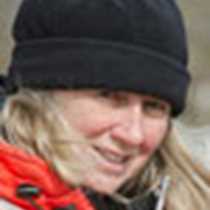Punta Arenas, Chile & Strait of Magellan
Snow-capped peaks peered from behind the hills of Punta Arenas as the amber light of morning washed the town in tones of gold. The steppes of Argentina’s Patagonia are now behind us and we enter the wetter world of Chile’s southern zones.
Punta Arenas bustled with activity. Supply ships bound for Antarctica filled their stores. Fishing vessels too shared our pier. It may be Halloween at home but here it is El Dia de los Muertes and families prepared to share a holiday with the spirits of their forefathers. The flavors of the town drew some of our shipboard family while the wilds of the woodlands captivated the rest. No matter the choice, our eyes drank thirstily of the verdant greens carpeting the hillsides and scattered about the town.
High on a hill in the Reserva Nacional Magallanes, the wind snatched at our hair and slowed our pace. It was a gentle reminder of the trials faced by families and friends back home as hurricane-force winds impacted many lives in the days just past. But below, on winding forest trails, we could immerse ourselves in simply enjoying where we were. Pale trunks of lenga or southern beech (Nothofagus pumilio), adorned with lichens of many sorts created mesmerizing patterns. Diddle-dee (Empetrum rubrum) and prickly heath (Pernettya mucronata) filled the openings in the woods, demonstrating that a line cannot be strictly drawn between the vegetation zones. Fingers of diversity knit one place to another. We breathed deeply of the cool fresh air.
The Straits of Magellan were an obsidian sea fractured into conchoidal scallops by the wind. Tiny hailstones beat a rhythm on the deck and dotted the water’s surface with evenly spaced punctuation points. Squalls skittered away and rainbows sent photographers scattering in search of cameras. Glacially sculpted mountains, adorned with winter snows, snatched the clouds and turned the sky into a canvas of modern art.
Still further south we venture where the shorelines twist and turn into a maze of fjords and channels. No continental land mass forms our boundary now but myriads of islands hide treasures yet to be explored.



